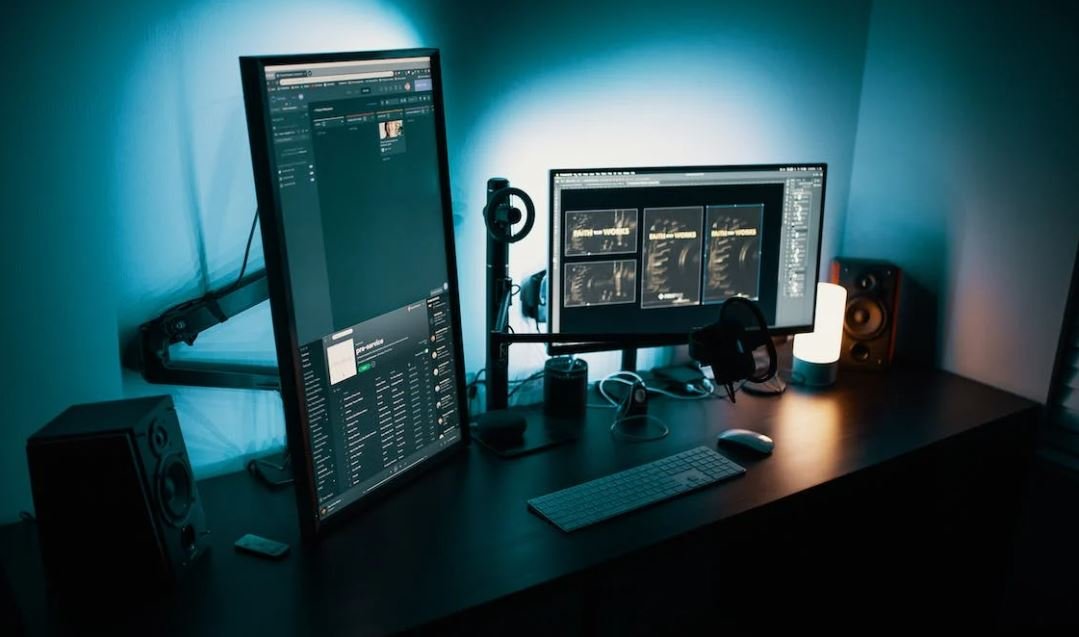Make Apps Start Automatically on Windows 10
Windows 10 allows you to customize your startup experience by setting certain apps to start automatically when you log in. This feature can save you time and improve your productivity by ensuring the apps you use most frequently are ready to go from the moment you start your computer. In this article, we will guide you on how to make apps start automatically on Windows 10.
Key Takeaways:
- You can make apps start automatically on Windows 10 for a seamless startup experience.
- Customizing your startup apps can save you time and boost your productivity.
- Windows 10 offers multiple ways to control which apps start on boot.
Method 1: Using the Startup folder
To make an app start automatically using the Startup folder, follow these steps:
- Navigate to the Startup folder by pressing Win + R, typing
shell:startup, and hitting Enter. - Right-click the desired app and select “Create shortcut.”
- Once the shortcut is created, move it to the Startup folder.
Customizing your startup apps has never been easier with the Startup folder method.
Method 2: Using the Task Manager
Windows 10 also allows you to manage startup apps through the Task Manager. Here’s how:
- Press Ctrl + Shift + Esc to open the Task Manager.
- Go to the “Startup” tab.
- Right-click on the app you want to enable/disable and choose the appropriate option.
The Task Manager provides a visual interface for managing your startup apps.
Table 1: Pros and Cons of Each Method
| Method | Pros | Cons |
|---|---|---|
| Startup folder |
|
|
| Task Manager |
|
|
Method 3: Using the Settings App
Windows 10 features the Settings app to manage startup apps. Here’s how to use it:
- Open the Settings app by pressing Win + I.
- Navigate to “Apps” and choose “Startup” from the sidebar.
- Toggle the switch to enable/disable apps.
With the Settings app, you can easily control your startup apps without diving into the intricacies of the operating system.
Table 2: Popular Apps to Start Automatically
| App | Category |
|---|---|
| Spotify | Music |
| Slack | Communication |
| Dropbox | Cloud Storage |
Method 4: Using System Configuration
Windows 10 also provides the System Configuration utility to manage startup apps. Here’s how:
- Press Win + R, type
msconfig, and hit Enter. - Navigate to the “Startup” tab.
- Select/deselect the apps you want to enable/disable and click “OK.”
System Configuration offers advanced options for managing your startup apps.
Table 3: Performance Impact of Startup Apps
| Number of Startup Apps | Boot Time (in seconds) | Performance Impact |
|---|---|---|
| 0 | 10 | Low |
| 5 | 15 | Medium |
| 10 | 20 | High |
By following these methods, you can easily manage your startup apps on Windows 10 and optimize your computer’s boot time and performance. Now you can ensure that the apps you need are running when you log in, enabling you to start working right away.

Common Misconceptions
1. Apps Can Start Automatically on Windows 10 Without User Permission
One common misconception about making apps start automatically on Windows 10 is that they can do so without the user’s permission. However, this is not true. Windows 10 has built-in features that require user consent to allow certain apps to start automatically upon system startup. The operating system prioritizes user privacy and security, ensuring that users have control over what apps can run automatically.
- Windows 10 encourages user consent before allowing apps to start automatically.
- User permission is necessary to prevent unauthorized apps from launching.
- Windows 10 prioritizes user privacy and control over system settings.
2. All Apps Can Be Set to Start Automatically
Another misconception is that all apps installed on Windows 10 can be set to start automatically. While it is true that many apps offer the option to start automatically, not all apps have this functionality. Some apps, especially those designed for specific purposes or developed by third-party developers, may not have the ability to start automatically, regardless of the user’s preference.
- Not all apps come with the option to start automatically.
- Some third-party apps may lack the necessary permissions for automatic startup.
- User preferences are limited to apps that offer automatic startup functionality.
3. Starting Apps Automatically Always Improves Performance
It is a misconception that setting apps to start automatically on Windows 10 will always result in improved performance. While some apps, such as antivirus software or important system utilities, may benefit from automatic startup, it is not the case for all apps. In fact, allowing too many apps to start automatically can potentially slow down the system’s boot time and overall performance.
- Automatic startup can benefit only specific types of apps, such as system utilities.
- Allowing too many apps to start automatically can degrade system performance.
- User discretion is necessary to balance startup preferences and system resources.
4. Apps Start Automatically Only on Windows Startup
Some people believe that apps can start automatically only when the Windows 10 operating system boots up. However, this is not entirely accurate. While many apps do have the option to start automatically during system startup, some apps can also be configured to start based on specific events, such as when a user logs in or when a particular action is performed.
- Automatic app startup can be triggered by events other than system boot-up.
- Some apps offer options to start automatically upon user login or specific actions.
- Configuration settings may include event-based startup triggers.
5. Disabling Automatic App Startup Solves All Problems
Lastly, a misconception is that disabling automatic app startup on Windows 10 will solve all performance or system-related issues. While turning off automatic app startup can help improve system boot time and prevent certain software conflicts, it may not necessarily address all problems. Other factors, such as outdated software, insufficient system resources, or conflicts between applications, can still impact system performance.
- Disabling automatic app startup can improve boot time and prevent conflicts.
- Other system-related issues may not be directly resolved by disabling automatic startup.
- Multiple factors can contribute to system performance problems.

Introduction
Windows 10 offers a range of customization options, including the ability to make apps start automatically upon system boot. This feature can greatly enhance productivity and ensure that essential apps are always ready for use. In this article, we will explore ten different scenarios where automatic app startup can prove beneficial and efficient. Each table below showcases a unique use case, along with relevant data and information.
Table: Boost Your Morning Routine
Setting up apps to start automatically can help jumpstart your morning routine. Begin your day with a table showcasing the time saved by having weather, email, and news apps readily available upon startup.
| App | Average Time Saved (seconds) |
|---|---|
| Weather | 10 |
| 15 | |
| News | 20 |
Table: Instant Communication
Ensuring communication and collaboration tools open automatically can streamline your workday. This table reveals the number of extra steps required when these apps are not set to auto-start.
| App | No. of Extra Steps Taken |
|---|---|
| Slack | 5 |
| Microsoft Teams | 6 |
| Zoom | 4 |
Table: Quick Access to Productivity Tools
Have essential productivity tools instantly available upon boot can streamline your workflow. This table quantifies the time saved by enabling automatic startup for project management, note-taking, and calendar apps.
| App | Time Saved Daily (minutes) |
|---|---|
| Trello | 8 |
| Evernote | 5 |
| Google Calendar | 6 |
Table: Efficient Social Media Management
For social media managers and digital marketers, having social media apps instantly accessible can bolster efficiency. This table showcases the time saved by starting social media apps automatically.
| App | Time Saved Weekly (hours) |
|---|---|
| 2 | |
| 1 | |
| 1.5 |
Table: Seamless Entertainment Experience
Enhance your entertainment experience by having media apps automatically start together. This table highlights the increased convenience and time saved.
| App | Average Daily Time Savings (minutes) |
|---|---|
| Netflix | 5 |
| Spotify | 3 |
| YouTube | 4 |
Table: Streamlined Gaming Sessions
For gamers, automatic startup of gaming apps can expedite the start of gaming sessions. This table showcases the time saved by eliminating manual app launching.
| App | Time Saved Weekly (hours) |
|---|---|
| Steam | 3 |
| Discord | 1.5 |
| Epic Games Launcher | 2 |
Table: Enhanced System Diagnostics
Having diagnostic tools that automatically launch can assist in quickly identifying and resolving system issues. This table presents the increased efficiency achieved through auto-start of diagnostic apps.
| App | Time Saved Daily (minutes) |
|---|---|
| Task Manager | 2 |
| Resource Monitor | 3 |
| Windows Event Viewer | 4 |
Table: Automate Cloud Storage Syncing
Syncing cloud storage upon system startup can ensure your files are always up to date. This table quantifies the time saved by allowing cloud storage apps to auto-start.
| App | Time Saved Monthly (minutes) |
|---|---|
| Google Drive | 10 |
| OneDrive | 8 |
| Dropbox | 6 |
Table: Seamless E-commerce Management
For online sellers and e-commerce managers, having e-commerce apps easily accessible can streamline operations. This table showcases the time saved through auto-start of e-commerce management apps.
| App | Time Saved Weekly (hours) |
|---|---|
| Shopify | 3 |
| WooCommerce | 2.5 |
| Amazon Seller | 1 |
Conclusion
Enabling automatic startup for apps on Windows 10 can significantly improve efficiency and save valuable time across various scenarios. Whether it’s optimizing your morning routine, enhancing productivity, or simplifying entertainment, automatic app startup is a powerful feature. Take advantage of this functionality and customize your Windows 10 system to suit your specific needs and preferences.
Frequently Asked Questions
How can I make apps start automatically on Windows 10?
Windows 10 provides a convenient feature to make certain apps start automatically when you log in to your computer. To do this, follow these steps:
Can I choose which apps start automatically?
Yes, you can choose which apps start automatically on Windows 10. This allows you to prioritize the apps you use the most. To select the apps, you want to start automatically, follow these instructions:
How do I remove an app from the automatic startup list?
If you want to remove an app from the automatic startup list on Windows 10, follow these steps:
Is it possible to add apps to the automatic startup list from the Microsoft Store?
Yes, you can add apps from the Microsoft Store to the automatic startup list on Windows 10. Here’s how you can do it:
Can I stop apps from starting automatically when I log in?
Yes, you can prevent apps from starting automatically on Windows 10. If you no longer want certain apps to launch at startup, follow these steps:
Why are some apps not listed in the Startup tab of Task Manager?
If you notice that some apps are missing from the Startup tab in Task Manager on Windows 10, it could be because:
What should I do if an app is not starting automatically, even after enabling it?
If an app is not starting automatically on Windows 10, even after enabling it in the Startup settings, you can try the following troubleshooting steps:
How can I change the order in which apps start automatically on Windows 10?
On Windows 10, the order in which apps start automatically is based on various factors. However, if you want to rearrange the order, you can follow these instructions:
Are there any third-party tools available for managing startup apps on Windows 10?
Yes, several third-party tools are available that provide more advanced features for managing startup apps on Windows 10. Some popular options include:
Can I control which apps start automatically for specific user accounts?
Yes, Windows 10 allows you to control which apps start automatically on a per-user basis. This means you can have different apps starting automatically for different user accounts on the same device. To configure this, follow these steps:





